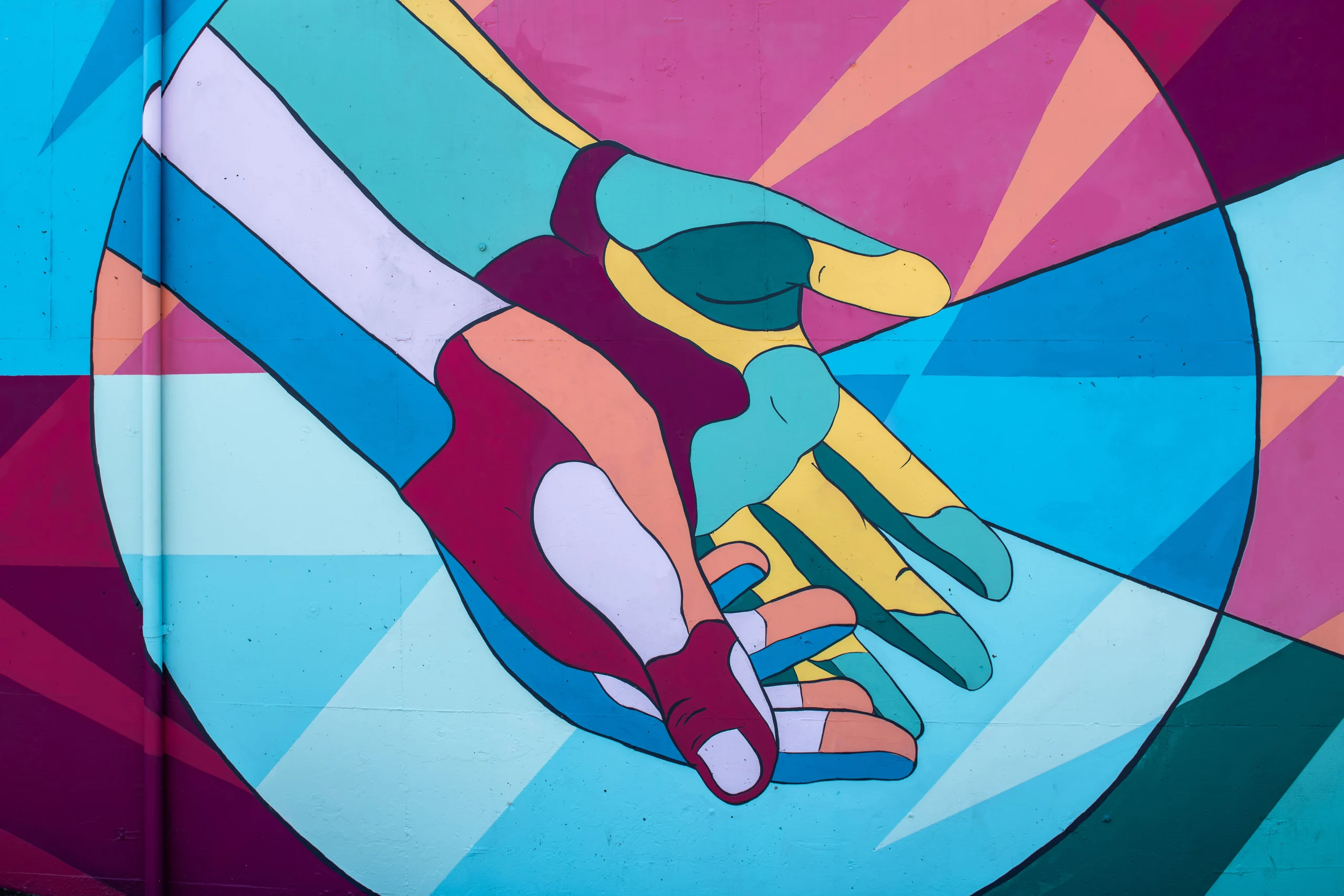In today’s increasingly diverse and inclusive world, understanding the varied experiences of sexual attraction is crucial. Semi-bisexuality, though less commonly discussed than other orientations like bisexuality or homosexuality, represents a unique and important aspect of sexual identity.
This article aims to guide you through the nuances of semi-bisexuality, helping you to understand and perhaps identify this orientation within yourself or recognize it in others. We’ll dive into what it means to be semi-bisexual, explore the challenges and experiences associated with this identity, and offer insights into how semi-bisexuals can navigate their personal and social worlds.
Here’s a quick look at what we’ll cover:
- Defining Semi-Bisexuality: What does it mean to be semi-bisexual? How does it differ from other orientations?
- Recognizing Semi-Bisexual Identity: Signs and experiences that might suggest a semi-bisexual orientation.
- Challenges Faced by Semi-Bisexuals: Understanding and overcoming the unique difficulties encountered by those within this community.
- The Semi-bisexual Flag: With its distinct colors, it symbolizes the diverse experiences within the community.
By the end of this article, you’ll have a clearer picture of what it means to identify as semi-bisexual and how this identity fits into the larger tapestry of the LGBTQ+ community and society as a whole.
Whether you’re someone who identifies within this spectrum, knows someone who does, or are simply interested in broadening your understanding of sexual diversity, this guide is for you. Let’s embark on this journey of exploration and acceptance together.

Recognizing Your Semi-Bisexual Identity
Identifying one’s sexual orientation can be a profound and sometimes complex journey. For those who might be semi-bisexual, recognizing this aspect of your identity involves understanding the unique ways you experience attraction. Here’s how you can start to identify signs of semi-bisexuality in yourself and embrace this valuable part of who you are.
Common Signs of Semi-Bisexuality
Semi-bisexuality falls within the broader spectrum of human sexuality, where your attractions aren’t limited strictly to one gender but don’t necessarily encompass multiple genders all the time. Here are some signs that might suggest you or someone you know is semi-bisexual:
- Variable Attraction: You might find that your attraction to different genders can vary significantly. For example, you may feel a strong romantic attraction to women but only occasionally feel sexual attraction to men.
- Selective Attraction: Unlike bisexual people who have attractions spanning more than one gender consistently, semi-bisexuals might feel these attractions in more specific, sometimes less frequent ways.
- Cultural and Social Comfort: You might feel more comfortable or “fit in” better in certain social settings or communities more than others, depending on the gender expressions or identities of the people around you.
Learn Everything You Need To Know About Gender Identity Counseling.
Encouraging Self-Exploration and Acceptance
Recognizing if you’re semi-bisexual is a personal journey that involves observing and accepting your unique pattern of attraction:
- Reflect on Your Feelings: Take time to reflect on whom you are attracted to and how this attraction manifests. Does it change over time? Is it dependent on the person rather than their gender?
- Journaling and Community Engagement: Writing down your feelings or discussing them in online communities dedicated to semi-bisexuals and other identities within the LGBTQ+ spectrum can provide clarity and support.
- Therapy and Guidance: Engaging with therapists who specialize in sexual identity can be incredibly helpful, especially if you find the journey confusing or overwhelming.
By embracing your semi-bisexual identity, you not only affirm your own experiences but also contribute to the broader understanding and acceptance of the rich diversity within the LGBTQ+ community. Remember, your sexuality is a personal aspect of your identity that deserves recognition and respect. Whether you’re sure about your orientation or still exploring, every step towards self-understanding is a positive one.
Struggling with your identity? Check out Can A Therapist Tell Me If I’m Non-Binary, Transgender, Or Gender Non-Conforming?

Navigating Challenges Faced by Semi-Bisexual Individuals
Semi-bisexuality, with its distinctive experiences of attraction and identity, can lead to misunderstanding and invisibility. Here’s a look at some specific hurdles semi-bisexuals might encounter and strategies for overcoming them.
Key Challenges
- Misunderstanding Within the LGBTQ+ Community: Semi-bisexual individuals often face challenges in being recognized and understood even within LGBTQ+ spaces. Their attractions, which may not neatly fit into the established definition of bisexuality or homosexuality, can lead to feelings of exclusion.
- Invisibility in Society: The broader societal recognition of semi-bisexuality is even more limited. This lack of visibility can make it difficult for semi-bisexuals to find role models or narratives that reflect their experiences.
- Confusion and Self-Doubt: Due to the fluid nature of their attractions, semi-bisexuals might struggle with internalized confusion about this aspect of identity. This can be exacerbated by stereotypes and rigid definitions of sexual orientation that dominate mainstream and LGBTQ+ discourses alike.
Strategies for Navigating Challenges
- Seek Supportive Communities: Look for online communities and forums that acknowledge and support a spectrum of bisexual identities, including semi-bisexuality. These spaces can provide validation and a sense of belonging. Organizations like the Bisexual Resource Center often have resources or articles that can be helpful.
- Educate Others: Taking an active role in educating friends, family, and peers about semi-bisexuality can help increase awareness and acceptance. Simple explanations about how semi-bisexuality differs from other sexual orientations can clarify misunderstandings. For instance, discussing the concept of the “split attraction model,” where romantic and sexual attractions don’t always align, can be a good starting point.
- Personal Reflection and Acceptance: Engage in self-reflection to understand and accept your sexual identity over time. Journaling your feelings about attraction and how they may change can be a therapeutic way to process your identity.
- Professional Help: Don’t hesitate to seek out therapy sessions with professionals specializing in LGBTQ+ issues. Therapists can provide a non-judgmental space to explore your feelings and help you navigate personal and societal challenges.
- Visibility and Representation: Contribute to the visibility of semi-bisexuality by participating in LGBTQ+ events and discussions, and by sharing your experiences where safe and possible. Use platforms like social media or blogs to write about your experiences and educate others.
Facing these challenges head-on strengthens your own identity and paves the way for greater recognition and validation of semi-bisexuality in the wider community. By fostering understanding and encouraging open discussions, we can help ensure that semi-bisexual individuals feel as valued and supported as members of other sexual orientations within the LGBTQ+ spectrum.

The Semi-bisexual Flag: Symbols and Significance
The semibisexual flag is designed to reflect the unique aspects of semibisexuality. It borrows elements from the bisexual flag, which itself is rich in meaning, to create a connection while also standing out with its own distinct message.
Colors and Meanings:
- Pink: The top stripe of the flag is a vibrant pink, a color traditionally used in the bisexual flag to represent attraction to the same gender. In the context of the semi-bisexual flag, it signifies attraction to genders similar to one’s own.
- Purple: The middle stripe is purple, a color that represents the blend of attractions within the bisexual and semi-bisexual community. It symbolizes the fluidity and diversity of attraction that goes beyond traditional gender binaries.
- White: The bottom stripe of the semi-bisexual flag is white, replacing the blue strip on the bisexual flag. For semi-bisexuals, this white stripe acknowledges the part of their identity that may experience attraction to genders unlike their own, though perhaps less consistently or intensely.
Whether flown at a Pride parade, displayed in a profile picture, or hung on a wall, the semibisexual flag is a source of pride and a symbol of resilience.
Connect and Heal: Discover Your Path at LGBTQ Therapy Space
As we conclude our exploration of semi-bisexuality and its place within the spectrum of human sexuality, it’s crucial to acknowledge the support systems that empower individuals to embrace their true selves. LGBTQ Therapy Space stands out as a beacon of guidance and acceptance for the LGBTQ+ and queer-identified community.
What Is LGBTQ Therapy Space?
LGBTQ Therapy Space is an online individual and family therapy service dedicated to addressing the unique needs of the LGBTQ+ community. We specialize in connecting clients with licensed therapists who are not only trained professionals but also members of the LGBTQ+ community themselves. This personal understanding of LGBTQ+ experiences enriches the therapeutic relationship, fostering a space of empathy and insight.
The Benefits of Home-Based Therapy
One of the significant advantages of LGBTQ Therapy Space is the ability to receive therapy from the comfort of your own home. Our online platform eliminates the need for commuting, making it easier and more convenient to schedule sessions around your busy life. Whether you’re dealing with identity issues, facing societal challenges, or just need someone to talk to, our therapists are here to help at times that suit you.
Why Choose LGBTQ Therapy Space?
Choosing LGBTQ Therapy Space means opting for a therapy service that truly understands the nuances of sexual and gender identities. Our therapists are equipped to handle discussions on a range of topics—from semi-bisexuality and its challenges within the bisexual community and society at large, to navigating personal relationships and understanding your own pattern of attractions.
Ready to Start Your Journey?
If you’re seeking a supportive, understanding, and knowledgeable therapist who can relate personally to the LGBTQ+ experience, start now. At LGBTQ Therapy Space, we’re ready to help you navigate your path, offering the support you need to live authentically and happily. Get in touch!



